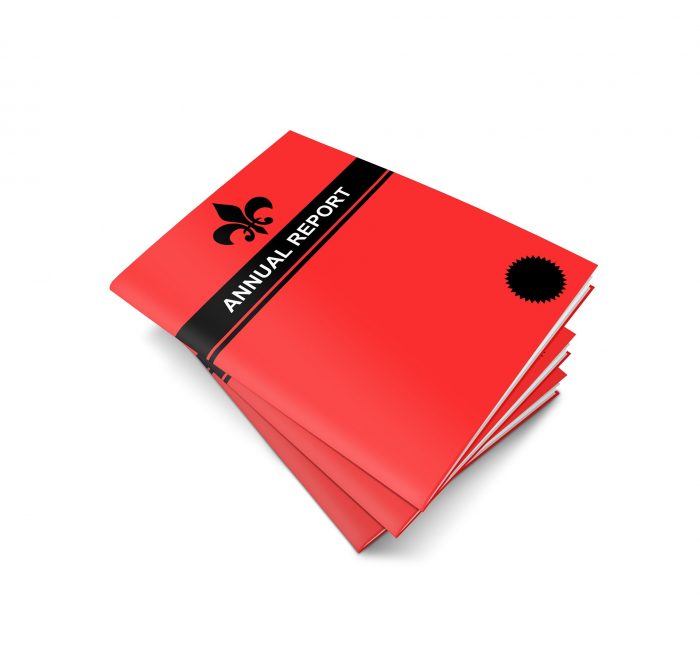Exclamation inflation
May 29, 2019Copy the write way
June 27, 2019
Getting A’s on your annual report
It’s the time of year that thoughts turn to annual reports. Most of us get at least one each year, from our superannuation fund, investment companies, even from the school your children attend. Writing annual reports can be a daunting task for those responsible for collating and disseminating the most relevant pieces of the year’s data but following a few simple steps can take help take the sting out of the job.
1. Work out your timetable
It may sound like a given, but putting together a timetable of when things need to be done and by whom can make the task much easier to navigate. It’s important to give yourself enough time to get everything done – from planning, to writing, to printing and then posting. Annual reports can take months to compile and it’s essential that everything works to a schedule. It’s a good idea, if you know the end date, to work backwards so you can determine how much each element of the report may take, and allow enough time for them all to fit together.
2. Start to think about the content
Good planning is essential if you’re going to make the writing stage as painless as possible. Think about what you want to say before you start writing. There are three main aspects to this:
a. What you want to say – or meeting your audience’s needs
b. What you have to say – understanding the regulatory requirements
c. What others in your industry are saying – keeping in mind your peers and best practice.
3. Determine your key messages
There are key points that senior management will want to include in the annual report, and a message they want their shareholders, stakeholders and readers to take away from it. These could include anything from understanding the mission of the company or department, to its performance over the past fiscal year, and its future prospects.
4. Agree on your writing style
Most organisations will have an idea of the way in which they want their annual report to be written in regards to a style or tone of voice. If senior management doesn’t have this in place, you’ll need to decide what it should be. The most important thing to remember is that the writing style should reflect the organisation’s brand and culture. If that brand and culture isn’t highly formal and corporate, don’t fall into the trap of thinking the annual report has to have a formal writing style.

5. Work out who your contributors will be
If you’re not writing the entire annual report, you’ll have to decide who is going to contribute, and give directions as to what you’d like them to write as well as a deadline for when it needs to be finished. Contributors could include the organisation’s chairman, chief executive, finance director, divisional / operational heads, company secretary, HR director or the head of sustainability. Ensure they are all aware of the message the report is conveying.
9. Start writing
If you’re the only one writing the report, then get started. There’s no right or wrong way to do this. Sometimes it helps to begin at the first page and work through the sections consecutively. Or you can tackle the key sections individually starting with the ones you suspect are going to be hardest to get right or which there’s likely to be most debate about. Or you might want to start with the easiest bits, so you feel you’re making progress.
10. Read through your draft
Once you’ve got all the words, graphs, pictures sourced and secured, read through your draft and make sure you have answered the following questions.
a. Does this report tell a consistent story throughout?
b. Is there unnecessary repetition?
c. Can I cut any of this without losing information my readers will want?
d. Is the style consistent?
e. Does this meet regulatory requirements?
f. Have I drawn out the connections between the different sections?
If you’re not writing the entire annual report, you’ll have to decide who is going to contribute, and give directions as to what you’d like them to write as well as a deadline for when it needs to be finished. Contributors could include the organisation’s chairman, chief executive, finance director, divisional / operational heads, company secretary, HR director or the head of sustainability. Ensure they are all aware of the message the report is conveying.
9. Start writing
If you’re the only one writing the report, then get started. There’s no right or wrong way to do this. Sometimes it helps to begin at the first page and work through the sections consecutively. Or you can tackle the key sections individually starting with the ones you suspect are going to be hardest to get right or which there’s likely to be most debate about. Or you might want to start with the easiest bits, so you feel you’re making progress.
10. Read through your draft
Once you’ve got all the words, graphs, pictures sourced and secured, read through your draft and make sure you have answered the following questions.
a. Does this report tell a consistent story throughout?
b. Is there unnecessary repetition?
c. Can I cut any of this without losing information my readers will want?
d. Is the style consistent?
e. Does this meet regulatory requirements?
f. Have I drawn out the connections between the different sections?
